#native americans
Text
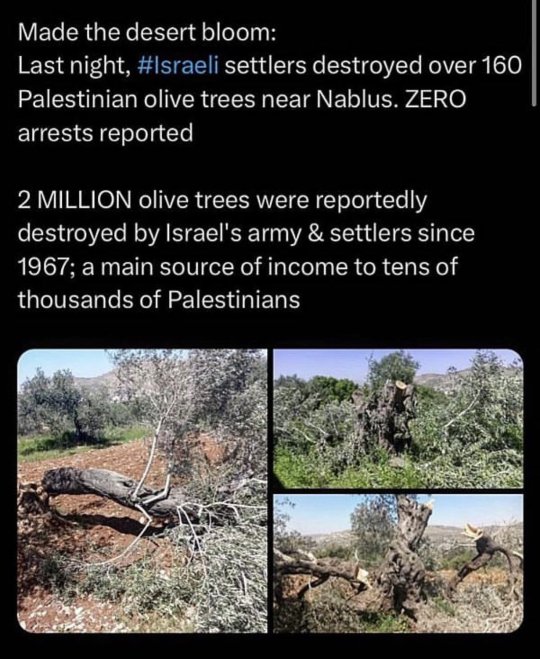

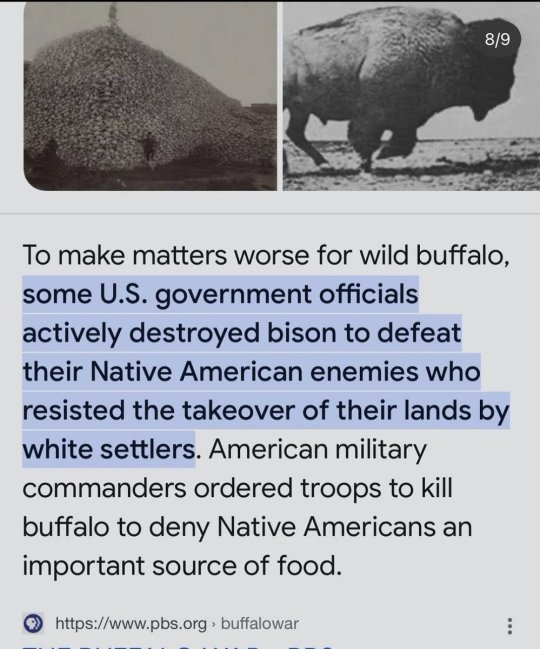
US literally is a teaching guide for war crimes.
#free palestine#politics#news#palestine#west bank#democrats#republicans#trees#botany#nature#native americans#military#woc#poc#women of color#colonialism#colonization#usa
8K notes
·
View notes
Text
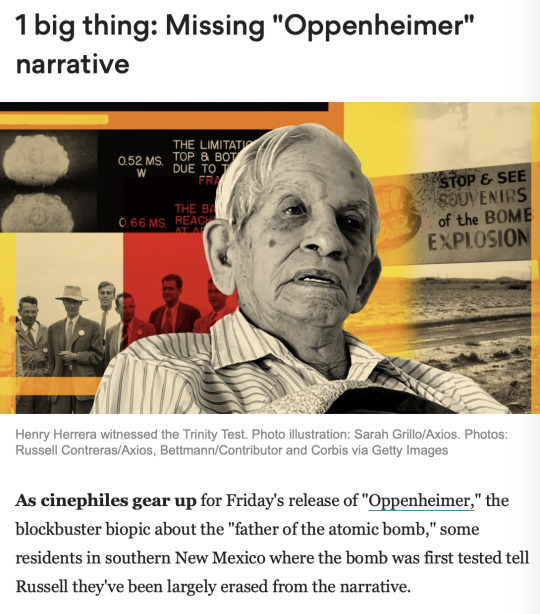




Full story here
21K notes
·
View notes
Text
please do not ever forget that the “americas” are stolen land. that we survive despite genocide. that we still exist despite continuing colonialism. solidarity with indigenous people around the world.
14K notes
·
View notes
Text
I saw this on quora and thought it was cool and wanted to share it on here. Its a long read but crazy. Its from Erik Painter

They did try. And they did capture Navajo men. However, they were unsuccessful in using them to decipher the code. The reason was simple. The Navajo Code was a code that used Navajo. It was not spoken Navajo. To a Navajo speaker, who had not learned the code, a Navajo Code talker sending a message sounds like a string of unconnected Navajo words with no grammar. It was incomprehensible. So, when the Japanese captured a Navajo man named Joe Kieyoomia in the Philippines, he could not really help them even though they tortured him. It was nonsense to him.
The Navajo Code had to be learned and memorized. It was designed to transmit a word by word or letter by letter exact English message. They did not just chat in Navajo. That could have been understood by a Navajo speaker, but more importantly translation is never, ever exact. It would not transmit precise messages. There were about 400 words in the Code.
The first 31 Navajo Marines created the Code with the help of one non-Navajo speaker officer who knew cryptography. The first part of the Code was made to transmit English letters. For each English letter there were three (or sometimes just two) English words that started with that letter and then they were translated into Navajo words. In this way English words could be spelled out with a substitution code. The alternate words were randomly switched around. So, for English B there were the Navajo words for Badger, Bear and Barrel. In Navajo that is: nahashchʼidí, shash, and tóshjeeh. Or the letter A was Red Ant, Axe, or Apple. In Navajo that is: wóláchííʼ, tsénił , or bilasáana. The English letter D was: bįįh=deer, and łééchąąʼí =dog, and chʼįįdii= bad spiritual substance (devil).
For the letter substitution part of the Code the word “bad” could be spelled out a number of ways. To a regular Navajo speaker it would sound like: “Bear, Apple, Dog”. Or other times it could be “ Barrel, Red Ant, Bad Spirit (devil)”. Other times it could be “Badger, Axe, Deer”. As you can see, for just this short English word, “bad” there are many possibilities and to the combination of words used. To a Navajo speaker, all versions are nonsense. It gets worse for a Navajo speaker because normal Navajo conjugates in complex ways (ways an English or Japanese speaker would never dream of). These lists of words have no indicators of how they are connected. It is utterly non-grammatical.
Then to speed it up, and make it even harder to break, they substituted Navajo words for common military words that were often used in short military messages. None were just translations. A few you could figure out. For example, a Lieutenant was “one silver bar” in Navajo. A Major was “Gold Oak Leaf” n Navajo. Other things were less obvious like a Battleship was the word for Whale in Navajo. A Mine Sweeper was the Navajo word for Beaver.
A note here as it seems hard for some people to get this. Navajo is a modern and living language. There are, and were, perfectly useful Navajo words for submarines and battleships and tanks. They did not “make up words because they had no words for modern things”. This is an incorrect story that gets around in the media. There had been Navajo in the military before WWII. The Navajo language is different and perhaps more flexible than English. It is easy to generate new words. They borrow very few words and have words for any modern thing you can imagine. The words for telephone, or train, or nuclear power are all made from Navajo stem roots.
Because the Navajo Marines had memorized the Code there was no code book to capture. There was no machine to capture either. They could transmit it over open radio waves. They could decode it in a few minutes as opposed to the 30 minutes to two hours that other code systems at the time took. And, no Navajo speaker who had not learned the Code could make any sense out of it.
The Japanese had no published texts on Navajo. There was no internationally available description of the language. The Germans had not studied it at the time. The Japanese did suspect it was Navajo. Linguists thought it was in the Athabaskan language family. That would be pretty clear to a linguist. And Navajo had the biggest group of speakers of any Athabaskan language. That is why they tortured Joe Kieyoomia. But, he could not make sense of it. It was just a list of words with no grammar and no meaning.
For Japanese, even writing the language down from the radio broadcasts would be very hard. It has lots of sounds that are not in Japanese or in English. It is hard to tell where some words end or start because the glottal stop is a common consonant. Frequency analysis would have been hard because they did not use a single word for each letter. And some words stood for words instead of for a letter. The task of breaking it was very hard.
Here is an example of a coded message:
béésh łigai naaki joogii gini dibé tsénił áchį́į́h bee ąą ńdítį́hí joogi béésh łóó’ dóó łóóʼtsoh
When translated directly from Navajo into English it is:
“SILVER TWO BLUE JAY CHICKEN HAWK SHEEP AXE NOSE KEY BLUE JAY IRON FISH AND WHALE. “
You can see why a Navajo who did not know the Code would not be able to do much with that. The message above means: “CAPTAIN, THE DIVE BOMBER SANK THE SUBMARINE AND BATTLESHIP.”
“Two silver bars” =captain. Blue jay= the. Chicken hawk= dive bomber. Iron fish = sub. Whale= battleship. “Sheep, Axe Nose Key”=sank. The only normal use of a Navajo word is the word for “and” which is “dóó ”. For the same message the word “sank” would be spelled out another way on a different day. For example, it could be: “snake, apple, needle, kettle”.
Here, below on the video, is a verbal example of how the code sounded. The code sent below sounded to a Navajo speaker who did not know the Code like this: “sheep eyes nose deer destroy tea mouse turkey onion sick horse 362 bear”. To a trained Code Talker, he would write down: “Send demolition team to hill 362 B”. The Navajo Marine Coder Talker then would give it to someone to take the message to the proper person. It only takes a minute or so to code and decode.
youtube
31K notes
·
View notes
Text
For people who live in the U.S., November can bring to mind a lot of things, and one of them is Thanksgiving. This can be a complicated holiday because while most people just see it as an excuse to get together with friends and family and pig out, we all know that the story of the "First Thanksgiving" is bullshit.
This November, and for as long as it takes, I'm asking you to keep Native American and Alaska Native rights in mind and to fight for them. ICWA, the Indian Child Welfare Act, is at risk.
This act was created to stop cultural genocide. Until the late 1900s, Native American and Alaska Native children were routinely kidnapped and placed in residential schools and white families, where they faced abuse, forced assimilation, and sometimes murder. ICWA was passed in 1978 to stop this by allowing tribes to control the foster and adoption placement of Native American and Alaska Native children.
However, today, the SCOTUS started hearing arguments in a case that could overturn ICWA. This would not only endanger children and allow cultural genocide, but it would endanger tribal sovereignty since it would deny sovereign tribes the rights over the placement of their own children.
This November, this Thanksgiving, and until ICWA has been upheld, I ask you to stand up for the rights of Native Americans and Alaska Natives.
Spread the word about what is happening. Don't let this get swept under the rug. Post about it. Tell your friends and family.
Sign petitions.
Write to representatives.
Reach out to local tribes to see what you can do to help.
Protest.
And if you can afford to do so, donate to Native American and Alaska Native organizations.
#ICWA#indigenous rights#native americans#alaska natives#indian child welfare act#Thanksgiving#Signal boost#Boost the signal
28K notes
·
View notes
Text
When indigenous and formally colonized people from ALL OVER THE GLOBE are showing solidarity with Palestine, ask yourself why you chose to stand with the occupation
5K notes
·
View notes
Text
"Cody Two Bears, a member of the Sioux tribe in North Dakota, founded Indigenized Energy, a native-led energy company with a unique mission — installing solar farms for tribal nations in the United States.
This initiative arises from the historical reliance of Native Americans on the U.S. government for power, a paradigm that is gradually shifting.
The spark for Two Bears' vision ignited during the Standing Rock protests in 2016, where he witnessed the arrest of a fellow protester during efforts to prevent the construction of the Dakota Access Pipeline on sacred tribal land.
Disturbed by the status quo, Two Bears decided to channel his activism into action and create tangible change.
His company, Indigenized Energy, addresses a critical issue faced by many reservations: poverty and lack of access to basic power.
Reservations are among the poorest communities in the country, and in some, like the Navajo Nation, many homes lack electricity.
Even in regions where the land has been exploited for coal and uranium, residents face obstacles to accessing power.
Renewable energy, specifically solar power, is a beacon of hope for tribes seeking to overcome these challenges.
Not only does it present an environmentally sustainable option, but it has become the most cost-effective form of energy globally, thanks in part to incentives like the Inflation Reduction Act of 2022.
Tribal nations can receive tax subsidies of up to 30% for solar and wind farms, along with grants for electrification, climate resiliency, and energy generation.
And Indigenized Energy is not focused solely on installing solar farms — it also emphasizes community empowerment through education and skill development.
In collaboration with organizations like Red Cloud Renewable, efforts are underway to train Indigenous tribal members for jobs in the renewable energy sector.
The program provides free training to individuals, with a focus on solar installation skills.
Graduates, ranging from late teens to late 50s, receive pre-apprenticeship certification, and the organization is planning to launch additional programs to support graduates with career services such as resume building and interview coaching...
The adoption of solar power by Native communities signifies progress toward sustainable development, cultural preservation, and economic self-determination, contributing to a more equitable and environmentally conscious future.
These initiatives are part of a broader movement toward "energy sovereignty," wherein tribes strive to have control over their own power sources.
This movement represents not only an economic opportunity and a source of jobs for these communities but also a means of reclaiming control over their land and resources, signifying a departure from historical exploitation and an embrace of sustainable practices deeply rooted in Indigenous cultures."
-via Good Good Good, December 10, 2023
#indigenous#native americans#first nations#indigenous rights#tribal sovereignty#solar energy#solar power#solar panels#renewable energy#green energy#sioux#sioux nation#sustainability#climate hope#electrification#united states#hope#good news
2K notes
·
View notes
Text
Tribal Names
I don’t think many people, even some native people, are aware that the legal names of many tribes are actually not from the tribe.
Often the names came about because colonizers would ask one tribe "hey, what do you call those people over there?". then they would assign the name given to that tribe. so often the names were descriptions from unrelated tribes, or in more extreme cases, insults.
The Muscogee tribe got pretty lucky since the legal name was "creek" and it came from a different tribe going "oh, those are the people near the creek". which, is accurate enough, most creek settlements were placed along creeks. a famous one that is related to the Muscogee is the name "Cherokee". "Cherokee" is a Muscogee word meaning something along the lines of "people who don’t speak our language". Even this is pretty light compared to some names. some official tribal names translate to phrases like "dog eaters" or "lazy people".
This is why it’s not uncommon for tribes to start using older names. Muscogee comes from the term for our people "Mvskoke", and the tribe has made efforts to distance itself from the name "Creek". Although it is likely still the name you’ll hear most often.
#muscogee#mvskoke#native blogs#native american#indigenous blog#indigenous#native girls#indigenous history#muskogee#cherokee#oklahoma#native americans#tribal names#tribes#north american history#creek tribe
2K notes
·
View notes
Text
With the liberation of Palestine, every other group oppressed and suffering from genocide will be free as well. Recognize the genocides and look for freedom.
Free Armenia (genocides perpetrated by the Ottomans and the current occupation of Nagorno-Karabakh)
Free Sudan (mass rapes and murders are occurring there by the hand of the RSF. Sudan has the biggest displacement crisis in the world with +9 million people displaced)
Free Western Sahara (abandoned by the Spanish State in 1975, who is responsible for the celebration of the referendum of independence that has been frozen for over 50 years, currently occupied by the Alawite government of Morocco)
Free Congo (children forced to extract metals used for electronic devices in terrible conditions alongside mass displacement and violence. (DON´T BUY NEW PHONES YOURS IS FINE. QUIT VAPING AND IF YOU CAN´T, REUSE THEM)
Free the American Natives (Landback!!)
Free Ukraine (Holomodor and Russian aggression)
Uyghur genocide (People´s Republic of China sending native inhabitants to concentration camps and re-education camps)
This is by no means a comprehensive list, please add more to this in the reblogs.
CONDEMN THE STATES AND COLONIES OF FRANCE, THE USA, UK, GERMANY, SPAIN, JAPAN AND RUSSIA FOR THEIR CRIMES AGAINST HUMANITY. DEMAND RESPONSIBILITY AND ACKNOWLEDGEMENT OF GENOCIDES.
#genocide#palestine#ukraine#native americans#congo#western sahara#east turkestan#sudan#armenia#imperialism#colonialism
1K notes
·
View notes
Text
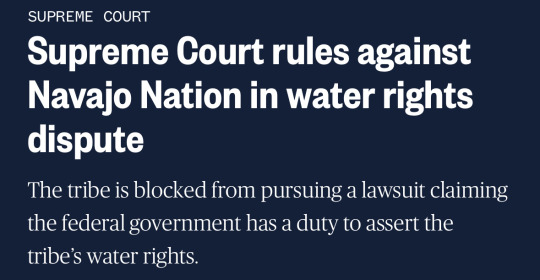

Source

Source
#scotus#supreme court#politics#us politics#government#current events#news#native americans#water#clean water
3K notes
·
View notes
Text
964 notes
·
View notes
Text

#free palestine#news#israel#idf#usa#native americans#peta#democrats#republicans#woc#sheep#biden#war crimes
2K notes
·
View notes
Text
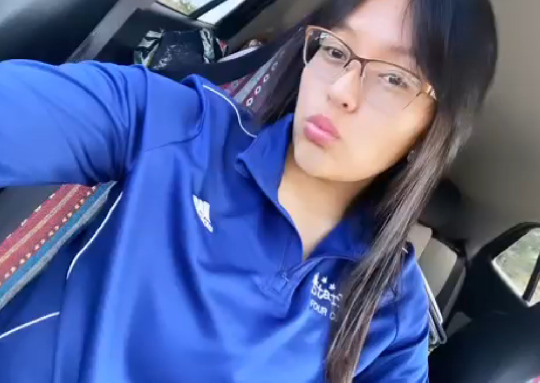


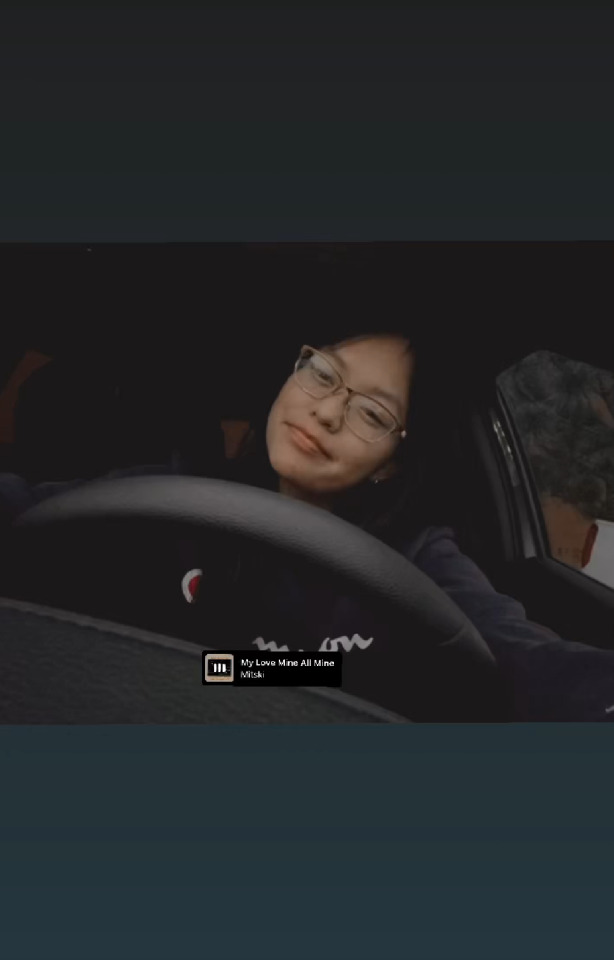
Jaylin P. if you got any got nudes on her DM, She's from Window Rock
#navajo#native girls#native#nativebaddiez#nativebigtitt#nativebigtity navajo#natural titts#n8tive#n8vgirls#native women#native american#native americans#hot nude#nativeamericans#titz#navajo girls#girls who like girls
423 notes
·
View notes
Photo

Trail of tears
The forced relocation during the 1830s of Eastern Woodlands Indians of the Southeast region of the United States to Indian Territory west of the Mississippi River.
402 notes
·
View notes
Text
“White women gained authority as civilizers by contrast with Native women, who were portrayed as backward creatures trapped in prehistory who dragged their children down with them. Breaking the tie between Native mothers and their youngsters thus seemed imperative to white reformers. Few reformers realized the truth [Alice] Fletcher had discovered: that many Indigenous cultures were free from patriarchy, and women enjoyed considerable agency, responsibility, and freedom in their tribes.”
-Kyla Schuller, The Trouble with White Women
#white feminism#Native Americans#indigenous people#Alice fletcher#the trouble with white women#kyla schuller
1K notes
·
View notes
Text
So my post on Oklahoma making it legal to take indigenous children from their parents without tribal consent is blowing up, and I'm glad people are horrified. But what I need people to know is that this might happen on a national level.
The Supreme Court is debating overturning the Indian Child Welfare Act.
What this act does is give Native American and Alaska Native tribes and nations control over the foster and adoption placement of their children. To overturn it would be to say tribes and nations aren't sovereign, and it would also allow the U.S. government to forcibly assimilate indigenous children into other cultures.
Please:
Spread the word about what is happening.
Read online news articles about this; the more traffic on those articles, the more likely the press is to write more articles.
If there are protests in your area, join them.
If there are indigenous nations or tribes in your area, ask them how you can help.
Donate to indigenous rights organizations like Native American Rights Fund.
Write to your representatives.
If ICWA falls, keep all of the above up. Don't just shrug and think it's over.
8K notes
·
View notes